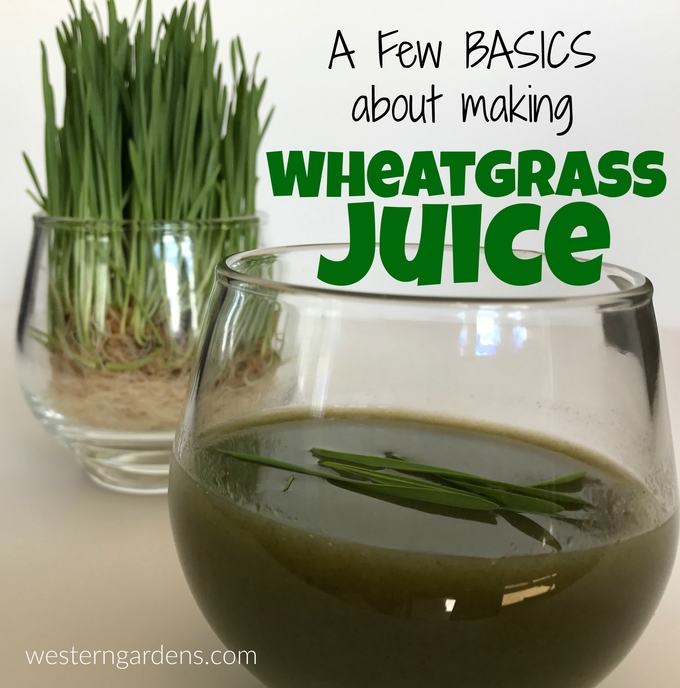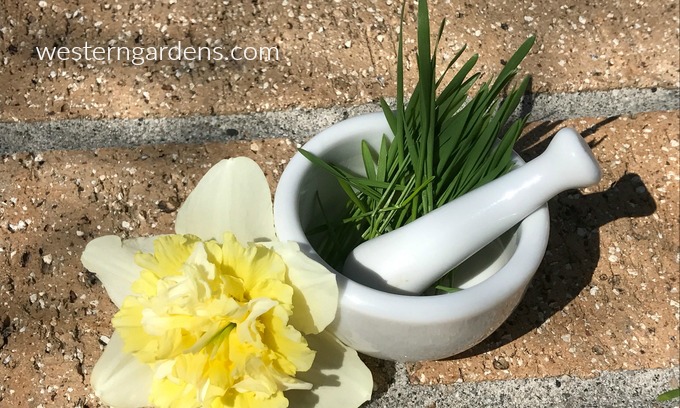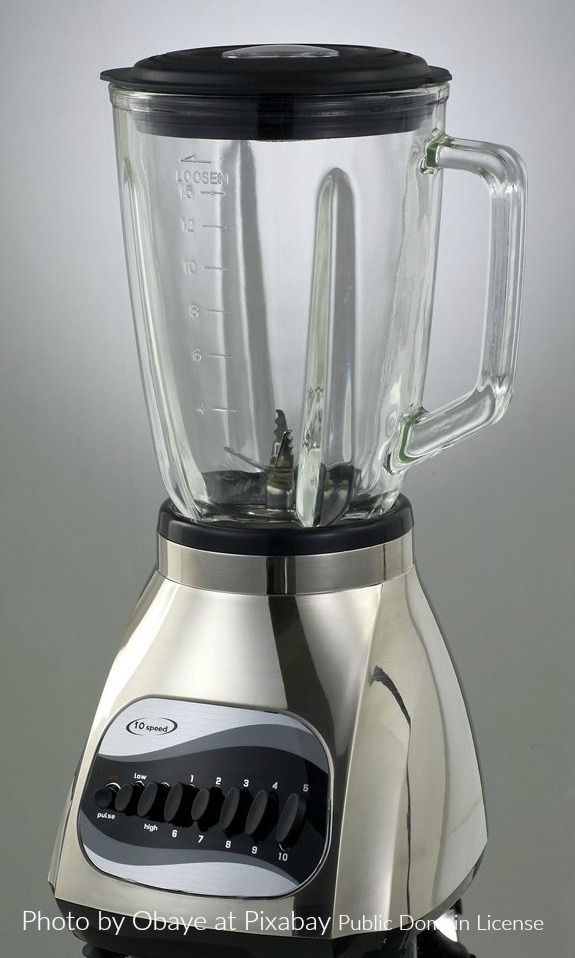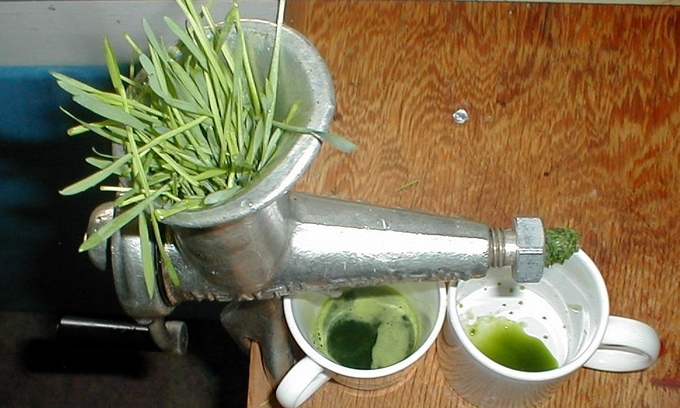Welcome Friend! Happy you came by again.
Did you make an Easter project growing wheat grain into wheatgrass? In our Wheatgrass Easter Egg project, we grew enough wheatgrass that would cost $3 or more if you purchased at the local market. If you find it difficult to throw away that gorgeous green wheatgrass, try your hand at making Wheatgrass Juice. Here are the basics.

Basic How-To’s:
Harvest when wheatgrass is about 4-8 inches in height.
Use sharp scissors and cut just above the roots.
Wash grass blades and chop with knife into ½-1 inches lengths. This size is easiest to work with unless you are feeding them into a manual grinder. In this case, no need to cut the blades smaller.
Use about ¼ – ½ cup of wheatgrass for one serving. Use your favorite method to extract the juice from the grass. (see methods below)
For best nutritional value, drink the wheatgrass juice within 30 minutes.
Wheatgrass juice can be mixed with other juices for a better taste. There are hundreds of recipes ranging from adding lemon juice, spinach leaves, cinnamon, and a myriad of other ingredients. Choose one and give it a try!
Mortar & Pestle method:
 Place grass in a mortar with about one tablespoon of water.
Place grass in a mortar with about one tablespoon of water.
Grind the grass with the pestle until water turns a very dark green.
Pour into a small glass the water and grass through cheesecloth or a coffee filter. Place the grass pulp back in the mortar. Add another tablespoon of water and grind again until water is dark green. Filter the water again and replace grass back into mortar.
Continue this process until the water doesn’t turn dark green anymore.
The spent ground grass can be composted.
Blender method:

Place about ½ cup wheatgrass in blender with 1 cup water.
Pulverize for one-two minutes.
Strain and discard the pulp.
Manual Juicer method:

Manual Grinder for DIY wheatgrass juice. Photo used under Wikimedia Commons GNU License
Follow the instructions for the machine you are using.
Did you know…
Wheatgrass is gluten free because it is taken from the sprouts rather than from the plant when it is old enough to produce the wheat seed.
Ancient Egyptians used wheatgrass for the effect on their health and beauty.
Wheatgrass is a good source of potassium, vitamins A, C, E, K, B6, dietary fiber, thiamin, riboflavin, niacin, iron, zinc, copper manganese, selenium and even protein.
According to Charles Schnabel, a wheatgrass proponent in the 1940’s, “fifteen pounds of wheatgrass is equal in overall nutritional value to 350 pounds of ordinary garden vegetables.”
Wendy Pettit
Latest posts by Wendy Pettit (see all)
- Save Water, Save Money with Turf Training in 2022 - April 19, 2022
- utah spring jobs at Western Gardens - January 30, 2021
- Best Plants for Seniors – Beginner Gardening - June 29, 2020